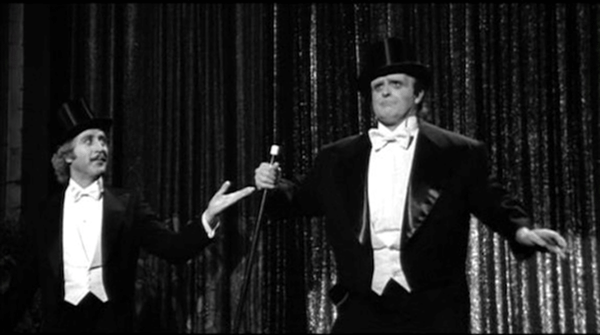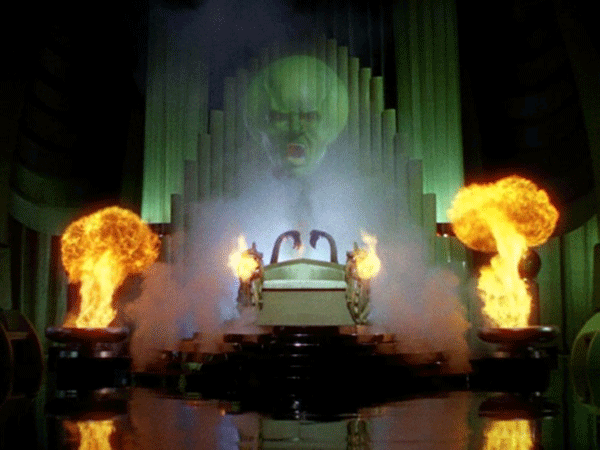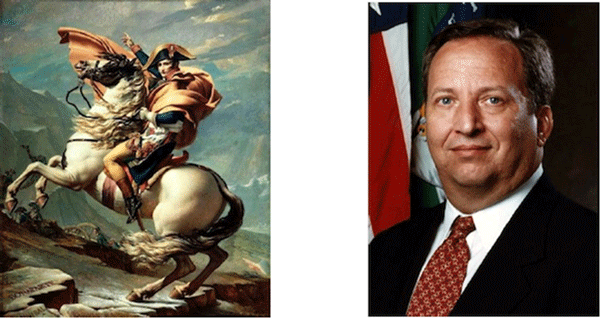
Last Thursday, prior to the FOMC announcement, I was having an early lunch with Kyle Bass so he could get back to the office in time for the announcement. As we were finishing up, I was invited to come sit with another group of friends and traders who also happened to be in the same restaurant. Everyone was sure there would be some type of tapering. That message had been clearly communicated to the markets. When the announcement came, the telephones went off and everyone erupted with various forms of surprise. I fully admit to being speechless. I kept waiting for some kind of explanation, and none came. The more we talked about it and the more I thought about it later, the more convinced I became that this was one of the more ham-handed policy announcements from the Fed in a very long time. Why would you go to the trouble of getting the market all ready for the onset of tapering, build expectations, and then jerk out the rug? What in the wide, wide world of sports is going on?
I’ve been with Louis Gave and David Rosenberg this weekend here in Toronto. Everyone is searching for an answer on the FOMC’s move. Louis came up with what I’m affectionately calling his conspiracy theory. He thinks Obama is quite upset that he can’t have Summers as Fed chair and that his staff is crossways with Yellen. Reports suggest she has not even been interviewed yet. Really? If that’s the case then perhaps Obama would rather stick with Bernanke for another two years and then make another try for Summers or maybe even a rested Geithner. Steve Cucchiaro (of $18.5 billion-under-management Windhaven fame) asked if Summers had maybe communicated through back channels to Bernanke that he wanted to end the tapering, and Bernanke was helping him out; but then when he was no longer in the running for Fed chair, Janet Yellen came and said, “Ben, I’m not ready to end tapering yet,” so Bernanke took one for the team.
I heard directly from another friend that he was in the offices of one of the world’s largest bond managers, and they had actually been at the Fed the previous week and were confident there would be a small tapering. Did you see the way bonds got ripped after the announcement? These bond managers were pissed (that’s a technical economics term). Can we trust the Fed now? Years of work building transparency and a confidence in the narrative, and then they blow it on a meaningless non-taper?
This week’s Outside the Box is from Ben Hunt. It echoes some of my own concerns about the Fed and raises others. Quoting:
Two things happened this week with the FOMC announcement and subsequent press conferences by Bernanke, Bullard, etc. – one procedural and one structural. The procedural event was the intentional injection of ambiguity into Fed communications. As I’ll describe below, this is an even greater policy mistake than the initial “Puttin’ on the Ritz” show Bernanke produced at the June FOMC meeting when “tapering” first entered our collective vocabulary. The structural event … which is far more important, far more long-lasting, and just plain sad … is the culmination of the bureaucratic capture of the Federal Reserve, not by the banking industry which it regulates, but by academic economists and acolytes of government paternalism. These are true-believers in too-clever-by-half academic theories such as management of forward expectations and in the soft authoritarianism of Mandarin rule. They are certain that they have both a duty and an ability to regulate the global economy in the best interests of the rest of us poor benighted souls.
This is one of the more incendiary OTBs in a while, and I think you should set aside some time to think on the implications Ben is writing about.
One of the important things the Federal Reserve provides when there is a crisis is that sense that “daddy’s home.”. Whether or not you personally believe the Fed has any significant power to actually do anything, the general market does believe it, and that’s the important thing. Now the Fed is at significant risk of damaging its reputation for decisiveness and clarity. We can only hope there is not another crisis coming out of Asia or Europe in the next few months that would require Federal Reserve action. What could they do now that would actually be credible? And while I don’t see a crisis developing in a short timeframe, it is the things that we don’t see, the Lions in the Grass, that create so many problems. Just saying…
I am at the airport in Toronto as I write this note. Tonight I get to have dinner with my friends Art Cashin, Barry Ritholtz, Barry Habib, Rich Yamarone, Christian Menegatti, and David Rosenberg; and Jack Rivkin may show up a little later. Ian Bremmer is supposed to drop by for early drinks before he heads off for dinner with Prime Minister Abe of Japan. It looks like it will be a spirited evening, with lots to talk about. I am not sure what I will write about this weekend, but I bet I’ll get a few ideas this evening.
And speaking of the venerable Art Cashin, I will not be the only one at the table tonight who is mystified by the Fed’s action. And apparently some members of the FOMC agree with Art and me. Art wrote this morning:
Candor With A Capital C – Yet Again – One of the Fed speakers yesterday was the President of the Dallas Fed, Mr. Richard Fisher. Mr. Fisher is a favorite of floor traders since, when he speaks, the message is clear, not couched in monetary argot. He didn’t deviate from that habit at all yesterday.
His speech was on current banking trends and a post-Lehman review. He said that too big to fail banks were “a dagger pointed at the heart of the economy.” At the end of his speech he said:
A Deliberate Deflection
As I said at the beginning of my remarks, I am going to try to avoid answering questions you might have about last week’s FOMC meeting and what some in the press have now labeled “the taper caper.” Nearly every Federal Reserve Bank president and his or her sister will be speaking to this topic this week, so you will be getting an earful of cacophonous comments on this subject.
Today, I will simply say that I disagreed with the decision of the committee and argued against it. Here is a direct quote from the summation of my intervention at the table during the policy “go round” when Chairman [Ben] Bernanke called on me to speak on whether or not to taper: “Doing nothing at this meeting would increase uncertainty about the future conduct of policy and call the credibility of our communications into question.” I believe that is exactly what has occurred, though I take no pleasure in saying so.
While he may have deflected further questioning on the “taper caper,” he did not deflect all questions. Again his candor brought headlines. Here’s a bit from Bloomberg on the Fed Chair succession:
“The White House has mishandled this terribly,” Fisher said today in response to a question from the audience after giving a speech in San Antonio, Texas. “This should not be a public debate,” he said, adding that the Fed “must never be a political instrument.”
On another question, Mr. Fisher apparently said that although Janet Yellen was dead wrong in her policy direction, she would make a great Chair.
We doubt that Mr. Fisher ever hears the question, “What exactly do you mean by that?” We could use more such candor elsewhere.
You have yourself a good week, and I’ll report back. And now sit down while we hear from Ben Hunt.
Your wishing he knew what was going on in Bernanke’s head analyst,
John Mauldin, Editor
Outside the Box[email protected]
Uttin’ On the Itz
By Ben Hunt, Ph.D.

High hats and arrowed collars, white spats and lots of dollars
Spending every dime, for a wonderful time
If you’re blue and you don’t know where to go to
Why don’t you go where fashion sits,
Puttin’ on the Ritz.
– Irving Berlin
Hegel remarks somewhere that all great, world-historical facts and personages occur, as it were, twice. He has forgotten to add: the first time as tragedy, the second as farce.
– Karl Marx
I never could bear the idea of anyone expecting something from me. It always made me want to do just the opposite.
– Jean-Paul Sartre, “No Exit”
Every time I hear a political speech or I read those of our leaders, I am horrified at having, for years, heard nothing which sounded human.
– Albert Camus
The structure of a play is always the story of how the birds came home to roost.
– Arthur Miller
In Young Frankenstein, Mel Brooks and Gene Wilder brilliantly reformulate Mary Shelley’s Frankenstein; or, The Modern Prometheus, a tragedy in the classic sense, as farce. The narrative crux of the Brooks/Wilder movie is Dr. Frankenstein’s demonstration of his creation to an audience of scientists – not with some clinical presentation, but by both Doctor and Monster donning top hats and tuxedos to perform “Puttin’ on the Ritz” in true vaudevillian style. The audience is dazzled at first, but the cheers turn to boos when the Monster is unable to stay in tune, bellowing out “UTTIN ON THE IIIITZ!” and dancing frantically. Pelted with rotten tomatoes, the Monster flees the stage and embarks on a doomed rampage.

Wilder’s Frankenstein accomplishes an amazing feat – he creates life! – but then he uses that fantastic gift to put on a show. So, too, with QE. These policies saved the world in early 2009. Now they are a farce, a show put on by well-meaning scientists who have never worked a day outside government or academia, who have zero intuition for, knowledge of, or experience with the consequences of their experiments.
Two things happened this week with the FOMC announcement and subsequent press conferences by Bernanke, Bullard, etc. – one procedural and one structural. The procedural event was the intentional injection of ambiguity into Fed communications. As I’ll describe below, this is an even greater policy mistake that the initial “Puttin’ on the Ritz” show Bernanke produced at the June FOMC meeting when “tapering” first entered our collective vocabulary. The structural event … which is far more important, far more long-lasting, and just plain sad … is the culmination of the bureaucratic capture of the Federal Reserve, not by the banking industry which it regulates, but by academic economists and acolytes of government paternalism. These are true-believers in too-clever-by-half academic theories such as management of forward expectations and in the soft authoritarianism of Mandarin rule. They are certain that they have both a duty and an ability to regulate the global economy in the best interests of the rest of us poor benighted souls. Anyone else remember “The Committee to Save the World” (Feb. 1999)? The hubris levels of current Fed and Treasury leaders make Rubin, Greenspan, and Summers seem almost humble in comparison, as hard as that may be to believe. The difference is that the guys on the left operated in the real world, where usually you were right but sometimes you were wrong in a clearly demonstrable fashion. A professional academic like Bernanke or Yellen has never been wrong. Published papers and books are not held accountable because nothing is riding on them, and this internal assumption of intellectual infallibility follows wherever they go. As a former cleric in this Church, I know wherefore I speak.

There’s frequent hand-wringing among the chattering class about whether or not the Fed has been “politicized.” Please. That horse left the barn decades ago. In fact, with the possible exception of Paul Volcker (and even he is an accomplished political animal) I am hard pressed to identify any Fed Chairman who has not incorporated into monetary policy the political preferences of whatever Administration happened to be in power at the time.
Bureaucratic capture is not politicization. It is the subversion of a regulatory body, a transformation in motives and objectives from within. In this case it includes an element of politicization, to be sure, but the structural change goes much deeper than that. Politicization is a skin-deep phenomenon; with every change in Administration there is some commensurate change, usually incremental, in policy application. Bureaucratic capture, on the other hand, marks a more or less permanent shift in the existential purpose of an institution. The WHY of the Fed – its meaning – changed this week. Or rather, it’s been changing for a long time and now has been officially presented via a song-and-dance routine.
What Bernanke signaled this week is that QE is no longer an emergency government measure, but is now a permanent government program. In exactly the same way that retirement and poverty insurance became permanent government programs in the aftermath of the Great Depression, so now is deflation and growth insurance well on its way to becoming a permanent government program in the aftermath of the Great Recession. The rate of asset purchases may wax and wane in the years to come, and might even be negative for short periods of time, but the program itself will never be unwound.
There is very little difference from a policy efficacy perspective between announcing a small taper of, say, a $10 billion reduction in monthly bond purchases and announcing no taper at all. But there is a HUGE difference from a policy signaling perspective between the two. Doing nothing, particularly when everyone expects you to do something, is a signal, pure and simple. It is an intentional insertion of uncertainty into forward expectations, a clear communication that the self-imposed standards for winding down QE as established in June are no longer operative, that the market should assume nothing in terms of winding down QE.
Think of it this way … why didn’t the Fed satisfy market expectations, their prior communications, and their own stated desire to wait cautiously for more economic data by imposing a minuscule $5 billion taper? Almost every market participant would have been happy with this outcome, from those hoping for more accommodation for longer to those hoping that finally, at last, we were on a path to unwind QE. Everyone could find something to like here. But no, the FOMC went out of its way to signal something else. And that something else is that we are NOT on automatic pilot to unwind QE. A concern with self- sustaining growth and a professed desire to be “data dependent” are satisfied equally with either a small taper or doing nothing. Choosing nothing over a small taper is only useful insofar as it signals that the Fed prefers to maintain a QE program regardless of the economic data. And that’s a position that almost every market participant can find a reason to dislike, as we’ve seen over the past few days. I mean … when even Fed apologist extraordinaire Jon Hilsenrath starts to complain about Fed communications (although his latest article title remains “Market Misreads Signals”), you know that you have a Fed whose preference functions are not identical to the market’s.
Moreover, Bernanke and his team are taking steps to prevent future FOMC’s or Fed Chairs from reversing this transformation of QE from emergency policy to government program. In addition to the implicit signal given by choosing no taper over a small taper, there was an explicit signal in both Bernanke’s comments on Wednesday and in Bullard’s interviews on Friday – the Fed is adding an inflation floor to its QE linkages, alongside the existing unemployment linkage. Previously we were told that QE would persist so long as unemployment is high. Now we are told that QE will also persist so long as inflation is low. Importantly, these are being presented as individually sufficient reasons for QE persistence. If unemployment is high OR inflation is low, QE rolls on. Precedent matters a lot to any clubby, self- consciously deliberative Washington body, from the Supreme Court to the Senate to the FOMC, and by setting multiple explicit macroeconomic linkages to QE – all of which are one-way thresholds designed to continue asset purchases – this Fed is making it much harder for any future Fed to reverse course.
But wait, there’s more …
Given the manner in which inflation statistics are constructed today – and just read Janet Yellen’s book (The Fabulous Decade: Macroeconomic Lessons from the 1990’s, co-authored with Alan Blinder) if you think that the Fed is unaware of the policy impact that statistical construction can achieve … changing inflation measurement methodology is one of the key factors she identifies to explain how the Fed was able to engineer the growth “miracle” of the 1990’s – inflation is now more of a proxy for generic economic activity than it is for how prices are experienced. In a very real way (no pun intended), the meaning and construction of concepts such as real economic growth and real rates of return are shifting beneath our feet, but that’s a story for another day. What’s relevant today is that when the Fed promises continued QE so long as inflation is below target, they are really promising continued QE so long as economic growth is anemic. QE has become just another tool to manage the business cycle and garden- variety recession risks. And because those risks are always present, QE will always be with us.

In Pulp Fiction the John Travolta character plunges a syringe of adrenaline into Uma Thurman’s heart to save her life. This was QE in March, 2009 … an emergency, once in a lifetime effort to revive an economy in cardiac arrest. Now, four and a half years later, QE is adrenaline delivered via IV drip … a therapeutic, constant effort to maintain a certain quality of economic life. This may or may not be a positive development for Wall Street, depending on where you sit. I would argue that it’s a negative development for most individual and institutional investors. But it is music to the ears of every institutional political interest in Washington, regardless of party, and that’s what ultimately grants QE bureaucratic immortality.
It is impossible to overestimate the political inertia that exists within and around these massive Federal insurance programs, just as it is impossible to overestimate the electoral popularity (or market popularity, in the case of QE) of these programs. In the absence of a self-imposed wind-down plan – and that’s exactly what Bernanke laid out in June and exactly what he took back on Wednesday – there is no chance of any other governmental entity unwinding QE, even if they wanted to. Which they don’t. Regardless of what political party may sit in the White House or control Congress in the years to come, it will be as practically impossible and politically unthinkable to eliminate QE as it is to eliminate Social Security or food stamps. QE is now a creature of Washington, forever and ever, amen.
The long-term consequences of this structural change in the Fed are immense and deserve many future Epsilon Theory notes. But in the short to medium-term it’s the procedural shifts that have been signaled this week that will impact markets. What does it mean for market behavior that Bernanke intentionally delivered an informational shock by forcing uncertainty into market expectations?
First, it’s important to note that this is not really an issue of credibility. The problem is not that people don’t believe that Bernanke means what he said on Wednesday, or that they won’t believe him if he says something different in October. The problem is that the Fed is entirely believable, but that the message is not one of “constructive ambiguity” as the academic papers written by Fed advisors intend, but one of vacillation and weakness of will.
From a game theoretic perspective, ambiguity can be a very effective strategy in pretty much whatever game you are playing. Alan Greenspan was a master of this approach, famous for the lack of clarity in his public statements. Other well-known practitioners of intentionally opaque statements include Mao Zedong (hilariously lampooned in Doonesbury when Uncle Duke had a short-lived stint as the US Ambassador to China) as well as most Kremlin communications in the Soviet era. Clarity and transparency can also be a very effective strategy in pretty much any game, particularly if you’re playing a strong hand or you want to make sure that your partner follows your lead. For example, throughout the Cold War both the Americans and the Russians would place certain strategic assets in plain sight of the other country’s surveillance apparatus so that there would be no mistaking the strength and intent of the signal.
The key to the success of both strategies – intentional ambiguity and intentional clarity – is consistency and, very rarely, the “gotcha” moment of a strategy switch. To use a poker analogy, the tight player who has a reputation for never bluffing can take down a big pot with a bluff much more easily than a player who is impossible to read and has a reputation as a frequent bluffer. Of course, this bluff can only be used once in a blue moon or the reputation for being a tight player will be lost, as will future bluffing effectiveness. Also, the reputation as a tight player must be established effectively prior to the first bluff.
To stick with the poker analogy, here’s my take on what the Fed has done. For the past four months, they’ve tried to create a reputation as a tight player, meaning that they have laid out fairly clear standards for how they will interpret labor data (the equivalent of cards dealt face up) to set the extent and timing of QE tapering. The market responded as it always does, setting its expectations on the basis of the Fed’s statements, and moving up or down as each new labor data card was revealed. But then on Wednesday, the Fed revealed a bluff to win … nothing … and announced that they would now be playing in an unpredictable fashion. It was almost as if Bernanke had read a beginner’s poker instruction book when he was at Jackson Hole in late August that said you have to be a hard-to-read player who bluffs a lot to succeed at poker, and decided as a result to change his entire strategy. I don’t know what you would think about a player like that in your poker game, but words like “weak”, “fish”, and “donkey” come to my mind.
In fact, I think that the poker instruction book metaphor is just barely a metaphor, because we know that several papers at Jackson Hole took Bernanke to task for his communication policy to date. For example, Jean-Pierre Landau, a former Deputy Governor of the Bank of France and currently in residence at Princeton’s Woodrow Wilson School, presented a paper focused on the systemic risks of the massive liquidity sloshing around courtesy of the world’s central banks. For the most part it’s a typical academic paper in the European mold, finding a solution to systemic risks in even greater supra-national government controls over capital flows, leverage, and risk taking. But here’s the interesting point:
“Zero interest rates make risk taking cheap; forward guidance makes it free, by eliminating all roll-over risk on short term funding positions. … Forward guidance brings the cost of leverage to zero, and creates strong incentives to increase and overextend exposures. This makes financial intermediaries very sensitive to “news”, whatever they are.”
Landau is saying that the very act of forward guidance, while well-intentioned, is counter-productive if your goal is long-term systemic stability. There is an inevitable shock when that forward guidance shifts, and that shock is magnified because you’ve trained the market to rely so heavily on forward guidance, both in its risk-taking behavior (more leverage) and its reaction behavior (more sensitivity to “news”). This argument was picked up by the WSJ (“Did Fed’s Forward Guidance Backfire?”), and it continued to get a lot of play in early September, both within the financial press and from FOMC members such as Narayana Kocherlakota.
I think that Bernanke took these papers and comments to heart … after all, they come from fellow trusted members of the academic club … and decided to change course with communication policy. No more clearly stated forward guidance, but rather the oh-so-carefully crafted ambiguity of an Alan Greenspan. Here would be a Monster that can sing and dance, one that can be trotted on stage in a tux and tails and is sure to delight the audience with a little number by Irving Berlin. What could possibly go wrong? Well, the same thing as the first performance back in June – a complete misunderstanding of the real-world environment into which these signals are injected.
At least in June the Fed still projected an aura of resolve. Today even that seems missing, and that’s a very troubling development. Creating a stable Narrative is a function of inserting the right public statement signals into the Common Knowledge game. As described above, it really doesn’t matter what the Party line is, so long as it is delivered with confidence, consistency, and from on high. But once the audience starts questioning the magician’s sleight-of-hand mechanics, once the Great and Terrible Wizard of Oz is forced to say “pay no attention to that man behind the curtain”, the magician has an audience perception problem. Fair or not, there is now a question of competence around Fed policy and its decision-making process. Sure the Monster can sing, but can it sing well?

Unfortunately, I think that this perception of an irresolute, somewhat confused Fed is poised to accelerate in the forthcoming nomination proceedings for a new Chair, not dissipate. If strength of will and resolve of purpose is the quality you need to project, then the Fed needs a Strongman on a Horse:

not a Wise Oracle Baking Cookies.

Sorry, but it’s true.
I mean, does anyone doubt that Janet Yellen is a consensus builder who would feel more at home at a faculty tea with Elizabeth Warren than a come-to-Jesus talk with Zhou Xiaochuan? Does anyone doubt that Larry Summers is the polar opposite, a bureaucratic Napoleon who would absolutely revel in lowering the boom on Zhou or Tombini … or Bullard or Yellen, for that matter? But it looks like Yellen is the shoo- in candidate, so whatever perceptions of Fed wishy-washiness and indecision that are currently incubating are likely to grow, no matter how unfair those perceptions might be.
What does all this mean for how to invest in the short to medium-term? Frankly, I don’t think that “investment” is possible over the next few months, at least not as the term is usually understood, and at least not in public markets. When you listen to institutional investors and the bulge-bracket sell-side firms that serve them, everything today is couched in terms of “positioning”, not “investment”, and as a result that’s the Common Knowledge environment we all must suffer through. This is the fundamental behavioral shift in markets created by a Fed-centric universe – the best one can hope for is a modicum of protection from the caprice of the Mad God, and efforts to find some investable theme are dashed more often than they are rewarded. The Narrative of Central Bank Omnipotence – that all market outcomes are determined by monetary policy, especially Fed policy – is stronger than ever today, so if you’re looking to take an exposure based on the idiosyncratic attributes or fundamentals of a publicly traded company … well, I hope you have a long time horizon and very little sensitivity to the price path in the meantime. I will say, though, that the counter-narrative of the Fed as Incompetent Magician, which is clearly growing in strength right alongside the Omnipotence Narrative, makes gold a much more attractive option than this time a year ago.
As for where all this game-playing and stage-strutting ultimately ends up, I want to close with two quotes by academics who are very far removed from the self-consciously (and self-parodying) “scientific” world view of modern economists. Weaver and Midgley are from opposite ends of the political spectrum, but they come to very similar conclusions. I’ll be examining the paths in which the “birds come home to roost”, to use Arthur Miller’s phrase, in future notes. I hope you will join me in that examination, and if you’d like to be on the direct distribution list for these free weekly notes please sign up at Follow Epsilon Theory.
The scientists have given [modern man] the impression that there is nothing he cannot know, and false propagandists have told him that there is nothing he cannot have.
– Richard M. Weaver, “Ideas Have Consequences”
Hubris calls for nemesis, and in one form or another it’s going to get it, not as a punishment from outside but as the completion of a pattern already started.
– Mary Midgley, “The Myths We Live By”
Like Outside the Box?
Sign up today and get each new issue delivered free to your inbox.
It’s your opportunity to get the news John Mauldin thinks matters most to your finances.
© 2013 Mauldin Economics. All Rights Reserved.
Outside the Box is a free weekly economic e-letter by best-selling author and renowned financial expert, John Mauldin. You can learn more and get your free subscription by visiting www.MauldinEconomics.com.
Please write to [email protected] to inform us of any reproductions, including when and where copy will be reproduced. You must keep the letter intact, from introduction to disclaimers. If you would like to quote brief portions only, please reference www.MauldinEconomics.com.
To subscribe to John Mauldin’s e-letter, please click here: http://www.mauldineconomics.com/subscribe
To change your email address, please click here: http://www.mauldineconomics.com/change-address
Outside the Box and MauldinEconomics.com is not an offering for any investment. It represents only the opinions of John Mauldin and those that he interviews. Any views expressed are provided for information purposes only and should not be construed in any way as an offer, an endorsement, or inducement to invest and is not in any way a testimony of, or associated with, Mauldin’s other firms. John Mauldin is the Chairman of Mauldin Economics, LLC. He also is the President of Millennium Wave Advisors, LLC (MWA) which is an investment advisory firm registered with multiple states, President and registered representative of Millennium Wave Securities, LLC, (MWS) member FINRA, SIPC, through which securities may be offered . MWS is also a Commodity Pool Operator (CPO) and a Commodity Trading Advisor (CTA) registered with the CFTC, as well as an Introducing Broker (IB) and NFA Member. Millennium Wave Investments is a dba of MWA LLC and MWS LLC. This message may contain information that is confidential or privileged and is intended only for the individual or entity named above and does not constitute an offer for or advice about any alternative investment product. Such advice can only be made when accompanied by a prospectus or similar offering document. Past performance is not indicative of future performance. Please make sure to review important disclosures at the end of each article. Mauldin companies may have a marketing relationship with products and services mentioned in this letter for a fee.
Note: Joining The Mauldin Circle is not an offering for any investment. It represents only the opinions of John Mauldin and Millennium Wave Investments. It is intended solely for investors who have registered with Millennium Wave Investments and its partners at http://www.MauldinCircle.com (formerly AccreditedInvestor.ws) or directly related websites. The Mauldin Circle may send out material that is provided on a confidential basis, and subscribers to the Mauldin Circle are not to send this letter to anyone other than their professional investment counselors. Investors should discuss any investment with their personal investment counsel. You are advised to discuss with your financial advisers your investment options and whether any investment is suitable for your specific needs prior to making any investments. John Mauldin is the President of Millennium Wave Advisors, LLC (MWA), which is an investment advisory firm registered with multiple states. John Mauldin is a registered representative of Millennium Wave Securities, LLC, (MWS), an FINRA registered broker-dealer. MWS is also a Commodity Pool Operator (CPO) and a Commodity Trading Advisor (CTA) registered with the CFTC, as well as an Introducing Broker (IB). Millennium Wave Investments is a dba of MWA LLC and MWS LLC. Millennium Wave Investments cooperates in the consulting on and marketing of private and non-private investment offerings with other independent firms such as Altegris Investments; Capital Management Group; Absolute Return Partners, LLP; Fynn Capital; Nicola Wealth Management; and Plexus Asset Management. Investment offerings recommended by Mauldin may pay a portion of their fees to these independent firms, who will share 1/3 of those fees with MWS and thus with Mauldin. Any views expressed herein are provided for information purposes only and should not be construed in any way as an offer, an endorsement, or inducement to invest with any CTA, fund, or program mentioned here or elsewhere. Before seeking any advisor’s services or making an investment in a fund, investors must read and examine thoroughly the respective disclosure document or offering memorandum. Since these firms and Mauldin receive fees from the funds they recommend/market, they only recommend/market products with which they have been able to negotiate fee arrangements.
PAST RESULTS ARE NOT INDICATIVE OF FUTURE RESULTS. THERE IS RISK OF LOSS AS WELL AS THE OPPORTUNITY FOR GAIN WHEN INVESTING IN MANAGED FUNDS. WHEN CONSIDERING ALTERNATIVE INVESTMENTS, INCLUDING HEDGE FUNDS, YOU SHOULD CONSIDER VARIOUS RISKS INCLUDING THE FACT THAT SOME PRODUCTS: OFTEN ENGAGE IN LEVERAGING AND OTHER SPECULATIVE INVESTMENT PRACTICES THAT MAY INCREASE THE RISK OF INVESTMENT LOSS, CAN BE ILLIQUID, ARE NOT REQUIRED TO PROVIDE PERIODIC PRICING OR VALUATION INFORMATION TO INVESTORS, MAY INVOLVE COMPLEX TAX STRUCTURES AND DELAYS IN DISTRIBUTING IMPORTANT TAX INFORMATION, ARE NOT SUBJECT TO THE SAME REGULATORY REQUIREMENTS AS MUTUAL FUNDS, OFTEN CHARGE HIGH FEES, AND IN MANY CASES THE UNDERLYING INVESTMENTS ARE NOT TRANSPARENT AND ARE KNOWN ONLY TO THE INVESTMENT MANAGER. Alternative investment performance can be volatile. An investor could lose all or a substantial amount of his or her investment. Often, alternative investment fund and account managers have total trading authority over their funds or accounts; the use of a single advisor applying generally similar trading programs could mean lack of diversification and, consequently, higher risk. There is often no secondary market for an investor’s interest in alternative investments, and none is expected to develop.









































